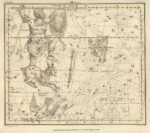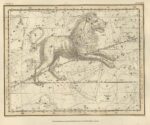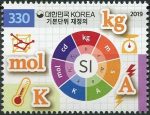![[World Heritage Program]](https://riverhouses.org/wp-content/uploads/2020/06/world-heritage.jpg) Every Wednesday since last September we’ve been paying a visit to a World Heritage Site drawn from one of our countries-of-the-week. The current homeschool year is approaching its end (and the new year will begin next month), so we’re going to wrap up this year’s grand World Heritage tour by inviting you to discover some of the new sites that have recently been added to the World Heritage list. You can find a directory of them here:
Every Wednesday since last September we’ve been paying a visit to a World Heritage Site drawn from one of our countries-of-the-week. The current homeschool year is approaching its end (and the new year will begin next month), so we’re going to wrap up this year’s grand World Heritage tour by inviting you to discover some of the new sites that have recently been added to the World Heritage list. You can find a directory of them here:
It takes several years and extensive international cooperation to have a cultural or natural area of importance declared a World Heritage Site. The recent additions linked above include, among many others, the Historic Center of Beijing in China, the Cultural Landscape of Kenozero Lake in Russia, the Mound-Burial System of the Ahom Dynasty in India, the Royal Court of Tiébélé in Burkina Faso, and Lençóis Maranhenses National Park in Brazil.
Also included is the Via Appia (the Appian Way), the most famous of all the ancient Roman roads:
More than 800 kilometres long, the Via Appia is the oldest and most important of the great roads built by the Ancient Romans. Constructed and developed from 312 BCE to the 4th century CE, it was originally conceived as a strategic road for military conquest, advancing towards the East and Asia Minor. The Via Appia later enabled the cities it connected to grow, and new settlements emerged that facilitated agricultural production and trade. This property, composed of 22 component parts, is a fully developed ensemble of engineering works, illustrating the advanced technical skill of Roman engineers in the construction of roads, civil engineering projects, infrastructure, and sweeping land reclamation works, as well as a vast series of monumental structures including, for example, triumphal arches, baths, amphitheatres and basilicas, aqueducts, canals, bridges, and public fountains. (World Heritage Centre #1708)
![[Weekly World Heritage]](https://upload.wikimedia.org/wikipedia/commons/thumb/3/3b/Minturno_Via-Appia.jpg/1024px-Minturno_Via-Appia.jpg)
World Heritage Sites are cultural or natural landmarks of international significance, selected by their home countries and recognized by the United Nations Educational, Scientific, and Cultural Organization. More than a thousand such sites have been designated in over 160 countries, and we feature one every Wednesday, drawn from one of our homeschool countries-of-the-week. You can find a complete list of World Heritage Sites online at the World Heritage Centre’s website and in Wikipedia.
The World Heritage Centre also has a free and comprehensive World Heritage education kit for teachers, as well as a wonderful full-color wall map of World Heritage Sites, available for the cost of shipping. Why not add them both to your own homeschool library. 🗺
What world treasures did you and your students explore in your homeschool this Hercules Term? 🇺🇳
❡ The great globe itself: This is one of our regular Homeschool Geography posts featuring cultural and natural sites of international importance. Print your own copy of our River Houses World Heritage Calendar and follow along with us as we tour the planet, and add your name to our weekly mailing list to get great homeschool teaching ideas delivered right to your mailbox all through the year. 🌐
❡ Print this little lesson: Down at the bottom of this post you'll find a special "Print" button that will let you create a neat and easy-to-read copy of this little lesson, and it will even let you edit and delete sections you don't want or need (such as individual images or footnotes). Give it a try today! 🖨
❡ Books in the running brooks: You can always turn to your River Houses almanac, atlas, and history encyclopedia for more information about any of our countries-of-the-week. The almanac has a lengthy section with detailed profiles of all the nations of the world; the endpapers of the atlas are indexes that will show you where all of the individual national and regional maps may be found; the history encyclopedia has a comprehensive collection of national histories in an appendix; and you can find additional illustrations, flags, and other mentions through the indexes in each of these volumes. For an ideal little lesson, just write the name of the Weekly World Heritage Site on your homeschool bulletin board, find its location in your atlas, read the WHC's brief description aloud, look at a picture or two, and you're done. Over the course of the year, without even realizing it, your students will absorb a wealth of new historical, geographical, and cultural information. 📚
❡ Homeschool calendars: We have a whole collection of free, printable, educational homeschool calendars and planners available on our main River Houses calendar page. They will help you create a light and easy structure for your homeschool year. Give them a try today! 🗓
❡ Support our work: If you enjoy our educational materials, please support us by starting your regular Amazon shopping from our very own homeschool teaching supplies page. When you click through from our page, any purchase you make earns us a small commission at no extra cost to you. Thank you for helping us to keep going and growing! 🛒
❡ Join us! The aim of the River Houses project is to create a network of friendly local homeschool support groups — local chapters that we call “Houses.” Our first at-large chapter, Headwaters House, is now forming and is open to homeschoolers everywhere. Find out how to become one of our founding members on the Headwaters House membership page. 🏡




